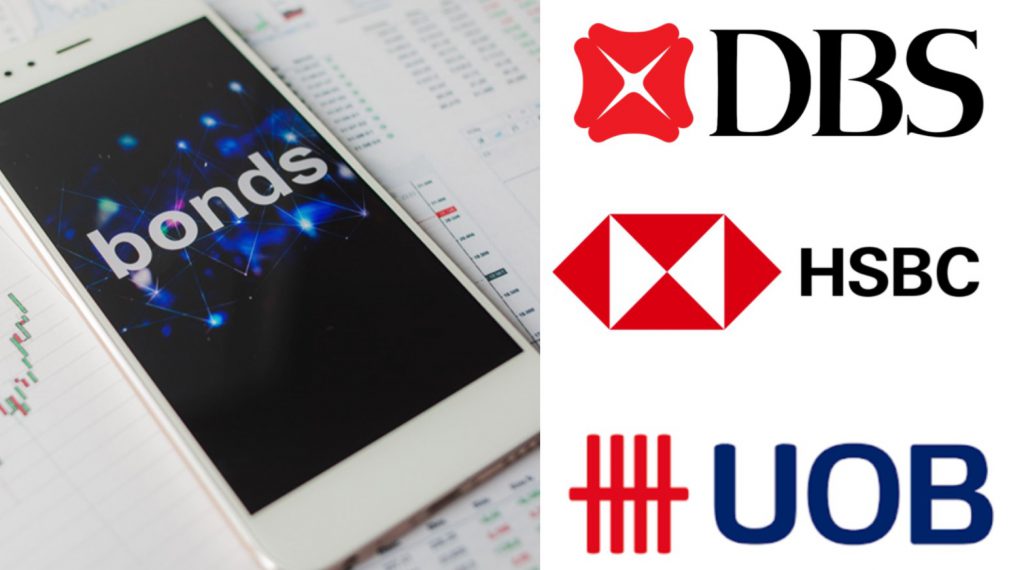Fractional investing in security tokens may be the buzzword among those in Singapore’s busy finance industry these days.
By 2024, the market of security tokens could exceed that of cryptocurrencies, and there’s an estimated US$544 trillion worth of assets that could be tokenised.
In just the European Union region alone, this market is expected to reach US$1.5 trillion in the next three years.
We may not see or feel it now, but the wheels are already in motion. Just like how bicycles were upgraded to cars as transport vehicles, and how the media industry has been transformed from print to digital, digitalisation is set to revolutionise the finance industry in the form of crypto tech.

Singapore’s largest bank DBS is one of the early adopters in tokenising investment products. It recently placed investment assets, like bonds, on the blockchain. The bank said it wants to help investors better diversify their debt instruments.
These financial assets are ready to be transformed by blockchain technology and a “J-curve adoption” is expected over the next one year to one-and-a-half years, some experts are saying.
“We expect smart securities to reach the board level with appropriate business cases being built,” Tuhina Singh, CEO at licensed digital asset custody service provider Propine said.
What are fractional assets and how can we benefit from them? We explore what’s this new trend and why banks and finance firms are shifting into this space.
Why are banks tokenising financial products
Tokenised financial assets can include products like bonds, futures, commodities, and stocks.
Digital security tokens are virtual tokens that digitally represent, and are smaller fractions of, the original asset. The tokenisation of assets and the transactions pertaining to digital tokens have been made possible by leveraging blockchain technology.
For consumers, digital tokens make such assets much more accessible and attainable. This is because they’re available in smaller lot sizes.
For example, DBS’ S$15 million digital bond is its digital exchange’s first security token offering (STO). The DBS Digital Bond comes with a six-month tenor and coupon rate of 0.6 per cent per annum, traded in board lots of S$10,000.
The denomination is smaller compared to traditional wholesale bonds, which often require investment and trading amounts in multiples of S$250,000.

In the announcement for the digital bonds earlier this year, DBS’ group head of capital markets Eng-Kwok Seat Moey said the inaugural listing of an STO represents a new way of unlocking value for issuers and investors.
Existing legal and tax infrastructure requirements are combined through the bond tokenisation exercise, which allows for a direct issuance on the digital exchange in smaller lot sizes.
HSBC is another bank that recently completed a digital bond issuance on digital asset exchange Marketnode, in conjunction with a S$1 billion perpetual securities issue by Singtel Group.
HSBC had said that the digital bond issuance was conducted along with a traditional bond issuance, as part of the Singapore Exchange’s (SGX) ongoing pilot to assess the use of digital assets in streamlining processes within the Asian bond market.
In June, UOB also pilot a digital bond issuance of S$600 million by tapping Marketnode’s digital asset issuance, depository and servicing platform. The digital bond is run in parallel with the conventional issuance process.
Marketnode is a joint venture between the SGX and investment company Temasek. It is an exchange-led digital asset venture focused on capital markets workflows through smart contracts, ledger, and tokenisation technologies.

According to banks and industry observers, tokenisation makes the process of issuing a bond very seamless, at a very low cost while being efficient.
Being able to fractionalise assets reduces the minimum investment thresholds for investors, and this gives investors more opportunities to diversify their investment portfolios and participate in private markets, generating more liquidity as well.
Buying assets in smaller value benefits consumers
Fractional token investments creates greater chances for people to invest as it lowers the entry point and opens the trading market up for more investors.
For example, a person who has S$50,000 in cash, can invest in five different digital bonds now compared to previously, where they may not even qualify for traditional wholesale bonds which requires a minimum investment of S$250,000.
Singapore’s progressive development of its legal and tax infrastructure has facilitated more STO issuances which helps to broaden and deepen the country’s sophisticated capital market.

With DBS’ recent STO, more digital securities transactions are likely to follow a similar issuance structure, combining existing legal and tax infrastructure requirements with a direct issuance.
According to DBS, its digital bond strictly adheres to the current bond legal framework, thereby according investors the same legal certainties and protections over their rights as traditional bonds.
The new structure that frontier banks are creating will set a precedent for future banks to follow and participate in this growth industry.
It helps to lower costs and reduce errors
By digitising securities like bonds, the tokenisation process saves substantial costs – from issuance to post-trade costs in the secondary market.
Smart contracts via blockchain technology enable the automation of otherwise manual processes during issuances.
For example, smart contracts can be programmed for certain tasks such as issuance, distribution, and post-sale, including corporate actions such as coupon payments. This reduces the risks of error-prone processes and improves operational efficiency.

The underlying blockchain technology also provides greater credibility as transaction records are immutable, which means that they are unable to be changed.
Hence, this cuts out the many steps previously required and allow for cost savings. Financial institutions do not need to deal with multiple intermediaries like in a traditional fundraising process and can have a faster speed to market.
Time limitations ease, better liquidity movement
With token asset structures, the usually illiquid asset classes in traditional securities become liquid. Sellers are no longer confined to a small pool of highly liquid investors. Instead, fractional ownership allows for more investors to enter the market. Some platforms also allow investors to cash out anytime.
In addition, these platforms allow ease to trade. For example, some security token trading platforms are open round the clock for trading, all day, all week, from anywhere in the world. Participants just need to have an internet connection.

This contrasts with traditional exchanges like the SGX and Wall Street for example, which operate on weekdays and during normal office hours.
The fintech boom
The world of asset ownership is set to change. Other than traditional banks getting in the game, this growing industry is set to create new platforms, new client servicing methods, tech development, among others.
In March this year, crypto exchange Binance signed a memorandum of understanding with Singapore-regulated private markets platform CapBridge to broaden its services. The legally non-binding agreement indicates that the two firms intend to build a strategic STO.
For other newly created digital securities platforms like ADDX, they will have to work on building their credibility as they scale their products. The platform is licensed by the Monetary Authority of Singapore as a financial institution last year for the issuance, custody, and secondary trading of digital securities or security tokens.

The most recent securities product from ADDX was in May where it released a S$150 million (US$113 million) commercial paper program in digital securities with financial services firm CGS-CIMB.
Having strong backers will help these platforms stand out and attract more customers. ADDX, whose shareholders include SGX, Temasek subsidiary Heliconia Capital, and government-backed Development Bank of Japan, has already launched three bond STOs to date and plans to list at least 20 STOs this year, more than double of the deals completed in 2020.
From 1 July 2021, Vulcan Post’s premium articles will be hidden behind a paywall. Subscribers will be able to enjoy exclusive articles with a deeper level of coverage and insight on verticals that include government technology, electric vehicles, cryptocurrency and e-commerce. You can check out our premium articles here and subscribe to us here.
Featured Image Credit: Shutterstock, individual bank logos
Also Read: As firms explore IPO overseas, SGX’s SPAC plans might be key in luring them to list in S’pore










